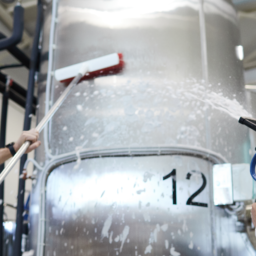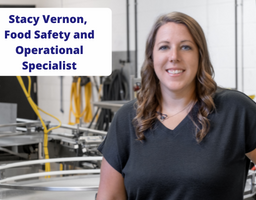
This past month marked 10 years since the Food Safety Modernization Act (FSMA) was signed into law. It then took four and a half years before the preventative control rules were finalized. Once the preventive control rules were finalized, organizations based on qualifications had up to 3 years to become compliant with the new rule. That means we are now over 2 years into all companies needing to meet the preventative control regulations.
Most organizations have met their compliance deadlines and of those, certain organizations qualified for exemptions and have modified requirements. But, as their organization grows and their sales surpass that qualified threshold, they are no longer exempt from certain requirements of the rule.
Facilities that no longer qualify for exemptions have to implement a hazard analysis, risk-based preventive controls and a supply chain program. A facility producing ready-to-eat (RTE) product that is open and exposed to the environment post lethality, are to consider conducting environmental monitoring in their facility. So what is environmental monitoring and what does it mean to your facility?
What is Environmental Monitoring?
Environmental monitoring is implemented in facilities that produce RTE foods to assess the effectiveness of their good manufacturing practices (GMPs) and sanitation program. This normally involves swabbing various surfaces and areas within the facility for pathogens or indicator organisms and sending those samples to a lab for analysis.
The goal of an environmental monitoring program is to seek out any potential pathogens within the environment and then take appropriate corrective actions to remove the pathogen from the facility to avoid contamination of foods.
Does my facility need an environmental monitoring program?
If your facility is looking to become GFSI certified, GFSI-aligned third party audits typically require environmental monitoring programs to be in place for producers of RTE food that is exposed to the environment post lethality.
FDA however, does leave this decision open to the facility based on their hazard analysis. The Code of Federal Regulation (CFR) does state in summary: The hazard evaluation required must include an evaluation of environmental pathogens whenever a ready-to-eat food is exposed to the environment prior to packaging and the packaged food does not receive a treatment or otherwise include a control measure (such as a formulation lethal to the pathogen) that would significantly minimize the pathogen (Reference 21 CFR 117.130(c)(1)(ii)).
It’s important to know that RTE foods are not processed by the consumer before consumption. As the processor, you want to ensure that there’s no chance the product they are consuming might be contaminated by pathogens from an unclean facility.
How do I implement an environmental monitoring program?
If you have determined that you need or want a program to meet regulatory or third party audit requirements, first take a good look at your sanitation program. Do you feel you have a well-established sanitation program? The environmental monitoring program is a test of your cleaning so, if you feel your sanitation program is lacking, you first want to address the needs of that program.
Then do an assessment of your resources. Do you have the financial and time/personnel resources to commit to carrying out a plan? If there are doubts that you can adhere to the program and be able to respond appropriately to test results, you will need to address those gaps first.
This is an ideal time to consult with an expert to help you understand how to build your program. They will work with you to determine what type of pathogens or indicator organisms should be tested within your facility based on your product and facility design. They can also help you in determining hygienic zoning, quantity and frequency of testing, and understanding what corrective actions will need to be taken based on results. This will ultimately assist you in understand the amount of financial and personnel resources you will need to dedicate to your environmental monitoring program.
My environmental monitoring program is established, now what?
Whether you are in the beginning phases or have been executing an environmental monitoring program for years, what are you doing with the data you gather from test results? Are you just trying to meet your quota of samples and ensuring the results meet specifications as written in the plan or are you analyzing the data to see where changes or improvements can be made? The environmental monitoring program should be treated as a living document that evolves and matures over time. Some best practices for data collection include tending results, site mapping, and strain or whole genome sequencing tracking.
Lastly, the program should be reviewed at least annually by the management and food safety team. Modifications to the program should be happening as needed based on corrective actions, changes in the process or new scientific data available to the industry. This review should take a deeper dive into what the data is telling you. If there are constantly no findings, which is not to be expected, this may indicate that the program isn’t being managed with the seek and destroy mentality. Most auditors will be skeptical of a long standing program that has never had a failure or corrective action.
Environmental monitoring can be a useful tool to understand what is happening in your facility and the risk associated to product. Ensure it is working for you and doesn’t become just another program you have to have. If implemented and analyzed properly, it should tell the story of your facility’s sanitation program.
Interested in learning more about our environmental monitoring services? Contact us through our website.
Learn more about the author, Stacy Vernon, Project Manager and Food Safety Expert.









